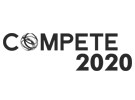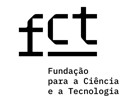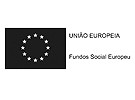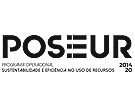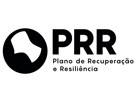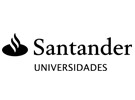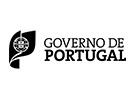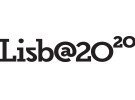



6 ECTS; 1º Ano, 2º Semestre, 42,0 PL + 28,0 TP + 5,0 OT , Cód. 814340.
Lecturer
- Maria Isabel Vaz Pitacas (1)(2)
(1) Docente Responsável
(2) Docente que lecciona
Prerequisites
Syllabus of the High School Mathematics subjects and the curricular units in the Mathematics area of ??the previous semester.
Objectives
Develop students' skills in the main techniques of Statistical Data Analysis, Probability Theory and Statistical Inference with a view to understanding and applying their main concepts and methods and which are useful in other curricular units of the course, so that students
students can achieve:
1. Knowledge and understanding Know and understand Probability and Statistics concepts
2. Ability to apply knowledge and understanding Ability to relate concepts, to model problems involving the concepts of Probabilities and Statistics, ability to apply concepts of Probabilities and Statistics in modeling and solving problems linked to technology and information technology.
3. Ability to formulate judgments Ability to use a critical spirit in analyzing issues
results obtained.
4. Communication skills Ability to use mathematical symbols and achieve
greater rigor and clarity in thought and language.
5. Learning skills Ability to study independently.
Program
1. Exploratory Data Analysis
1.1. General notions and examples of application of Statistics.
1.2. Fundamental statistical terms and concepts.
1.3. Frequency Distributions and Graphical Representation of Univariate Data.
1.4. Sample Characteristics.
1.5. Other Graphic Representations.
2. Introduction to Probabilities
2.1. Random experiments. Results space. Events.
2.2. Probabilities of an event. Properties.
2.3. Conditional probability.
2.4. Independent events and mutually exclusive events.
2.5. Multiplication theorem. Total Probability Theorem. Bayes' theorem.
3. Random Variables
3.1. Discrete and continuous random variables.
3.2. Distribution function. Properties.
3.3. Probability mass function and probability density function.
3.4. Parameters of a Distribution. Properties.
4. Theoretical Distributions
4.1. Discrete Probability Distributions and Continuous Probability Distributions.
4.2. Laws and Central Limit Theorem.
5. Introduction to Estimation
5.1. Preliminary notions about estimation. Estimators and estimates.
5.2. Spot estimation. Some point estimators.
5.3. Interval Estimation.
6. Hypothesis Testing
6.1. Null hypothesis and alternative hypothesis.
6.2. Type I error and type II error.
6.3. Test statistics and rejection region.
6.4. Most common hypothesis tests.
6.5. Relationship between hypothesis tests and confidence intervals.
7. Bivariate Data Analysis
7.1. General notions
7.2. Association Measures
7.3. Scatter diagram
7.4. Linear Association Analysis
7.5. Linear Regression
7.6. Model hypotheses
7.7. Estimation of model parameters
7.8. Prediction with the regression line
7.9. Quality of fit
Evaluation Methodology
i) Assessment by Frequency
During the semester, the student must perform:
3 (three) written tests, both classified from 0 to 20 points (PE1, PE2 and PE3) and whose grade
end is
Final grade = 0.35PE1+0.35PE2+0.30PE3
The student is exempt from the exam if he or she obtains at least 3 (three) points in each of the tests
written and the final classification is equal to or greater than 9.5 points.
ii) Assessment by Exam
Carrying out an exam.
The exam consists of a written test, graded from 0 to 20 points.
The student passes the subject if the final exam grade is equal to or higher than
9.5 values.
iii) Observations
The final classification will be calculated based on the evaluation elements
carried out by students.
Any student who is not exempt is admitted to the exam.
After completing any assessment test (attendance or exam) the student
You may have to take an oral exam.
A student who obtains a final classification higher than 17 may have to
undergo an extraordinary assessment. Failure to take the test results in a
final classification of 17 values.
The student obtains approval in the UC in accordance with the provisions of Points 11 and 12, of the
Article 11 of the IPT Academic Regulations.
The indicated assessments also apply to student workers.
Bibliography
- B.J, M. e Pimenta, F. e Andrade e Silva, J. e Pimenta, C. e Ribeiro, C. (2023). Introdução à Estatística. Lisboa: Escolar Editora
- Dalgaard, P. (2002). Introductory Statistics with R . Nova Iorque: Springer
- Maroco, J. (2019). Análise Estatística com o SPSS Statistics... Lisboa: ReportNumber
- Pestana,, D. (2010). Introdução à Probabilidade e à Estatística. Lisboa: Fundação Calouste Gulbenkian
- Ross, S. (2014). Introduction to Probability and Statistics for Engineers and Scientists , 5th ed, . University of California, Berkeley.: Academic Press
Teaching Method
Expository TP-classes where fundamental concepts are described and the consolidation of
knowledge through the presentation of examples. In PL classes, the teacher guides the
exploration of knowledge with proposed exercises for real application.
Software used in class
The Excel spreadsheet, the IBM SPSS statistical package and the R software are used for the
solving some exercises.


